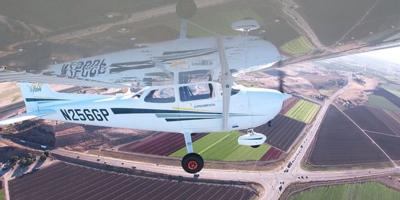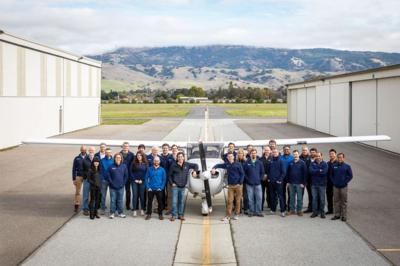$33.5 Million in Venture Capital Funding Dedicated to Transform Aviation
Reliable Robotics has reportedly achieved successful test flights of remote-piloted passenger airplanes in United States airspace.

In the first flight, the pilot pressed a button on a remote user interface and an unmanned four passenger Cessna 172 Skyhawk (C172) automatically taxied, took off, and landed. Most recently, the company demonstrated fully automated remote landing of an even larger aircraft, the Cessna 208 Caravan (C208), capable of carrying 14 passengers.
“By bringing advanced automation to aviation, we will deliver higher safety, reliability and convenience for cargo operators and eventually for passengers," said Robert Rose, Co-founder and CEO of Reliable Robotics.
Reliable Robotics seamlessly integrated its autonomous platform onto the 2,550 pound C172. They began the C172 program in January 2018 and completed fully automated gate-to-gate operation before the end of that year. Extensive system safety analysis and testing was conducted prior to the unmanned test flight in September 2019. This marked the first time a privately funded company operated a passenger airplane of this type with no pilot on board over a populated region, and was an important step in certifying the autonomous platform for repeated, safe civil use on certified aircraft.

“We spent the first portion of our flight test program focused on the C172. We thoroughly tested every aspect of our system in simulation and conducted rigorous safety checks before operating the aircraft without a pilot on board and are now proud to share what we’ve been working on,” said Robert Rose, Co-founder and CEO of Reliable Robotics. “By bringing advanced automation to aviation, we will deliver higher safety, reliability and convenience for cargo operators and eventually for passengers.”
The company designed and built a proprietary autonomous platform that can be applied to any fixed-wing aircraft. The platform includes avionics, software, mechanisms, a communications system, remote command interfaces, along with a backup system that has the capability to take over if needed.
Following the C172 program, it was adapted for use on the larger C208. Reliable Robotics is now working with the FAA on incrementally bringing this technology to market, having already demonstrated automated landing on the C208 last month.

Reliable Robotics was founded in 2017 by engineers who believe aircraft should fly themselves. The leadership team includes Co-founder and CEO Robert Rose who led flight software at SpaceX and the Autopilot program at Tesla, launching the Falcon 9 rocket, Dragon spacecraft and the first consumer automobile with fully unassisted self-driving capability. Co-founder and VP of Engineering Juerg Frefel led the team developing the compute platform for the Falcon 9 rocket and the Dragon spacecraft. Other senior members of the team have played key roles in the development of the Boeing 787, Airbus A380 and other major commercial aircraft and avionics systems.
 ANN's Daily Aero-Linx (05.02.24)
ANN's Daily Aero-Linx (05.02.24) ANN's Daily Aero-Term (05.02.24): Touchdown Zone Lighting
ANN's Daily Aero-Term (05.02.24): Touchdown Zone Lighting Aero-News: Quote of the Day (05.02.24)
Aero-News: Quote of the Day (05.02.24) ANN FAQ: Contributing To Aero-TV
ANN FAQ: Contributing To Aero-TV NTSB Final Report: Cirrus Design Corp SR20
NTSB Final Report: Cirrus Design Corp SR20





